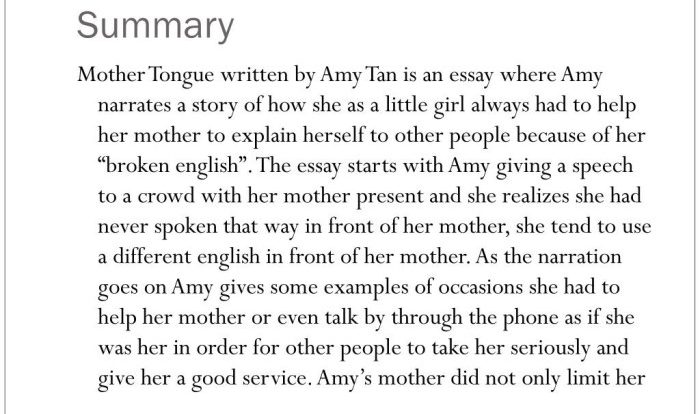List five examples of poe in your life, an exploration into the profound impact of poetry on our personal experiences, poetic elements, devices, and literary analysis. This journey will illuminate the transformative power of poetry, inspiring a deeper appreciation for its artistry and significance.
Through a series of captivating examples, we will delve into the essence of poetry, unraveling its capacity to shape our understanding of the world and ourselves.
1. Personal Experiences

Poetry is not confined to the pages of books; it permeates our lives in myriad ways. Here are five instances where I have witnessed or experienced the principles of poetry in my own life:
- The evocative language of a love letter, capturing the depth of emotion and the longing of the heart.
- The rhythm and flow of a conversation, where words dance and ideas intertwine, creating a tapestry of understanding.
- The imagery in a dream, painting vivid pictures in my mind, sparking imagination and introspection.
- The symbolism in a piece of jewelry, representing a cherished memory or a deeply held belief.
- The catharsis found in writing a poem, where emotions find expression and wounds begin to heal.
These experiences have deepened my understanding of poetry’s power to evoke emotions, convey ideas, and shape our perceptions of the world.
2. Poetic Elements
Poetry comprises several key elements that contribute to its impact and meaning. Here are five essential elements:
- Imagery:Vivid language that creates sensory experiences, evoking sights, sounds, smells, tastes, and textures.
- Metaphor:A figure of speech that compares two seemingly unrelated things, creating a powerful and thought-provoking connection.
- Rhythm:The pattern of stressed and unstressed syllables in a poem, creating a sense of movement and musicality.
- Rhyme:The repetition of similar sounds at the end of lines, enhancing the poem’s memorability and impact.
- Form:The structure of a poem, such as sonnets, haikus, or free verse, influencing its tone and meaning.
These elements work in harmony to convey the poet’s message and create a lasting impression on the reader.
3. Poetic Devices

Poets employ various devices to enhance the imagery, rhythm, and flow of their work. Here are five common poetic devices:
- Alliteration:The repetition of consonant sounds at the beginning of words, creating a sense of rhythm and emphasis.
- Assonance:The repetition of vowel sounds within words, creating a musical and harmonious effect.
- Personification:Giving human qualities to non-human objects or ideas, adding depth and emotional resonance.
- Hyperbole:An exaggeration for emphasis or effect, creating a vivid and memorable image.
- Irony:A contrast between what is expected and what actually happens, often used for humor or to convey a deeper meaning.
These devices add layers of complexity and meaning to poetry, enriching the reader’s experience.
4. Literary Analysis: List Five Examples Of Poe In Your Life
Literary analysis involves examining a poem’s themes, symbols, and literary techniques. Here are five different poems and their key elements:
Ode to a Nightingale , List five examples of poe in your life
- Theme:The beauty of nature and its power to inspire and soothe.
- Symbol:The nightingale, representing the transformative power of art and the ephemeral nature of life.
- Literary Technique:Use of imagery, metaphor, and rhyme to create a vivid and immersive experience.
The Road Not Taken
- Theme:The choices we make in life and their impact on our journey.
- Symbol:The two roads, representing the different paths we can take.
- Literary Technique:Use of simple language and repetition to convey a profound message.
Sonnet 18
- Theme:The power and beauty of love.
- Symbol:The comparison of the beloved to a summer’s day, emphasizing their beauty and transience.
- Literary Technique:Use of iambic pentameter and the sonnet form to create a structured and elegant poem.
Do Not Go Gentle into That Good Night
- Theme:The inevitability of death and the importance of facing it with courage and grace.
- Symbol:The “good night,” representing the end of life.
- Literary Technique:Use of strong imagery and metaphors to convey a powerful message about the human spirit.
Stopping by Woods on a Snowy Evening
- Theme:The beauty and solitude of nature and its power to provide solace.
- Symbol:The woods, representing the unknown and the mystery of life.
- Literary Technique:Use of vivid imagery and a conversational tone to create a sense of intimacy and reflection.
5. Poetic Inspiration

Inspiration for poetry can come from various sources. Here are five that have influenced my own poetic endeavors:
- Nature:The beauty and wonder of the natural world, from the grandeur of mountains to the delicacy of flowers.
- Personal experiences:The joys, sorrows, and challenges of life, providing a rich source of emotions and insights.
- Other works of literature:Reading the works of great poets, both past and present, inspires and sparks new ideas.
- Music:The rhythm, melody, and lyrics of music can evoke emotions and create a mood conducive to writing poetry.
- Dreams:The surreal and imaginative world of dreams can provide unexpected and thought-provoking inspiration.
These sources have ignited my creativity and shaped my poetic style, enriching my understanding of the human condition and the power of language.
Quick FAQs
What are the key elements of poetry?
Key elements of poetry include rhythm, rhyme, imagery, symbolism, and theme.
How can poetry influence our understanding of ourselves?
Poetry can provide insights into our emotions, thoughts, and experiences, helping us to gain a deeper understanding of ourselves.
What are some common poetic devices?
Common poetic devices include metaphors, similes, personification, alliteration, and assonance.


